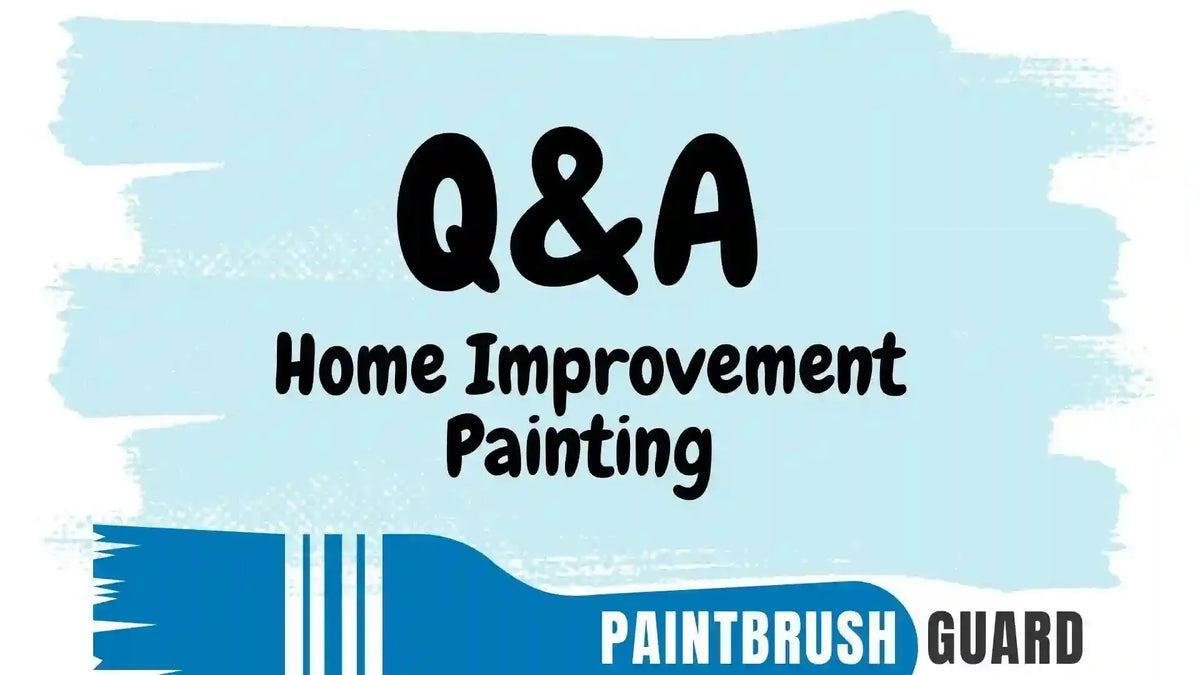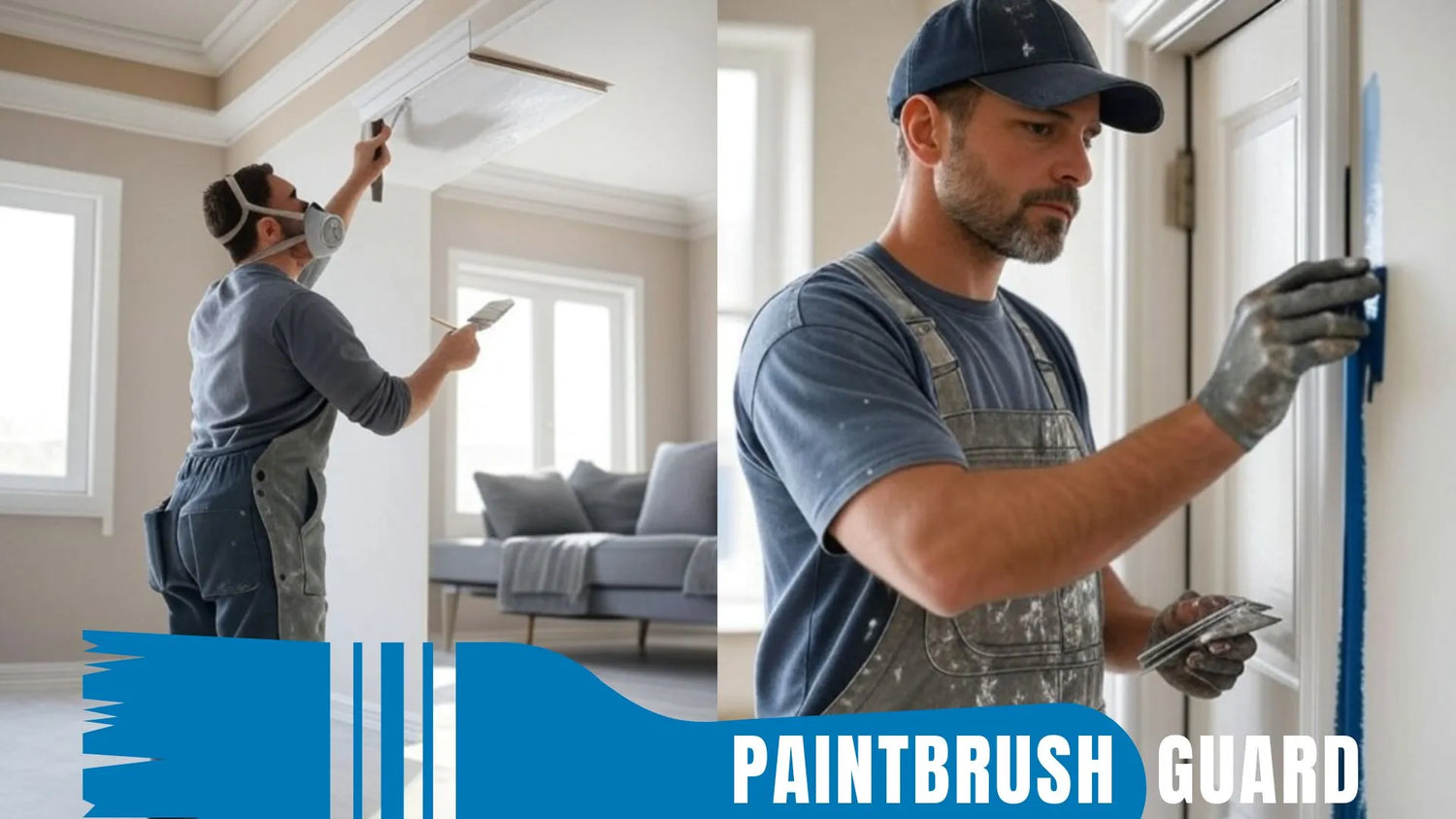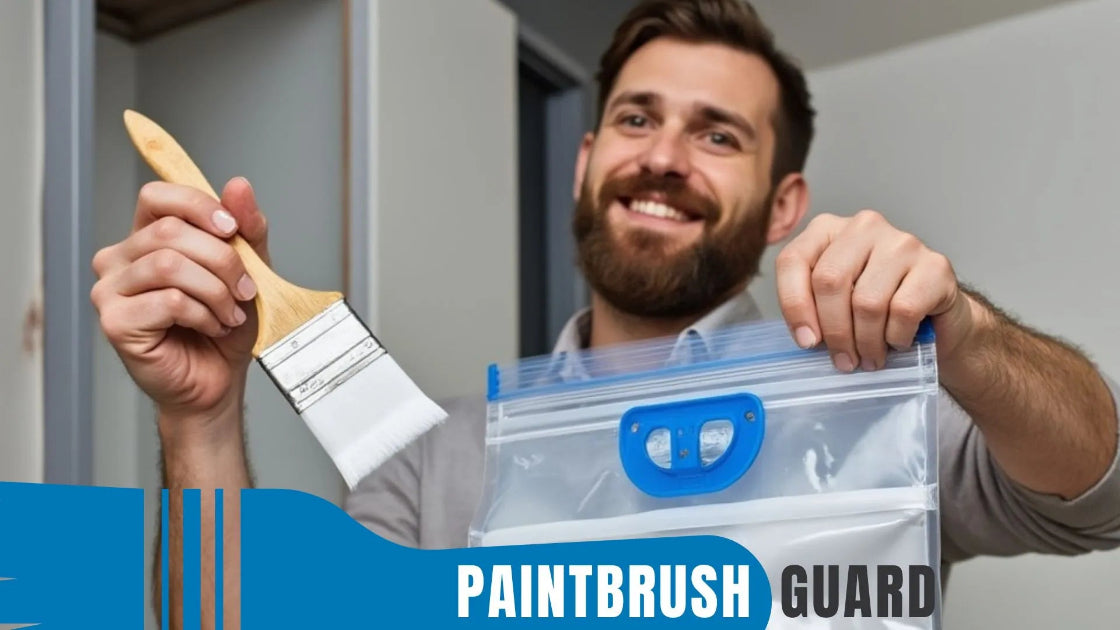
Is Painting Outdoor Concrete a Good Idea?
|
Time to read 5 min
|
Time to read 5 min
Painting outdoor concrete can enhance its appearance, protect surfaces, and offer an affordable update, but it requires ongoing maintenance and risks peeling if not done correctly.
Assessing concrete condition, climate, and paint options helps determine if painting concrete is the right choice for your outdoor space.
Read our exterior concrete painting guide: This guide walks you thorugh all steps from preparing to painting exterior concrete.
Painting concrete surfaces like patios, driveways, or walkways can breathe new life into a home’s exterior, transforming dull gray slabs into vibrant features. However, it’s not a decision to make lightly.
Choosing the wrong paint or skipping essential preparation can lead to problems like chipping, fading, or moisture damage, resulting in costly repairs or frequent repainting.
Careful evaluation ensures the project aligns with your aesthetic goals, budget, and long-term maintenance expectations, maximizing the benefits while minimizing potential pitfalls.
Painting concrete offers several compelling benefits that make it an attractive option for homeowners seeking to refresh their outdoor spaces. A fresh coat of paint can dramatically improve curb appeal, turning a worn driveway or patio into a stylish focal point that complements the home’s design.
It also provides a protective layer, shielding concrete from stains, weathering, and minor wear caused by foot traffic or environmental exposure. Compared to replacing or resurfacing concrete, painting is a cost-effective solution, offering significant visual impact at a fraction of the cost.
Additionally, the wide range of colors and finishes allows for customization, enabling homeowners to match their exterior decor or create unique patterns.
This article explores the relationship between painting concrete and waterproofing, the types of paints that work best, application techniques, and limitations to help you make an informed decision.
Despite its benefits, painting outdoor concrete comes with challenges that require careful consideration. One major drawback is the need for regular maintenance, as paint can peel, fade, or chip over time, especially in high-traffic areas like driveways, often requiring touch-ups every 3–7 years.
The process demands thorough preparation, including cleaning and priming, to ensure adhesion; neglecting this can lead to rapid failure. Using non-breathable paints risks trapping moisture, which may cause bubbling, mold, or cracking, particularly in humid climates.
Heavy use, such as vehicle traffic, can also accelerate wear, reducing the paint’s lifespan and making it less practical for certain surfaces.
Before deciding to paint outdoor concrete, several factors must be evaluated to ensure a successful outcome. The condition of the concrete is paramount; surfaces with cracks, spalling, or high porosity may not hold paint well, leading to peeling or uneven results.
Addressing damage through repairs is essential before proceeding. Climate plays a significant role, as humid or rainy regions require breathable paints to prevent moisture buildup, while dry, sunny areas need UV-resistant options to combat fading.
The type of paint is another critical factor—concrete-specific paints, such as acrylic latex or elastomeric, offer superior durability compared to standard paints, which may fail quickly. Finally, consider the surface’s usage; low-traffic areas like patios are better candidates for painting than driveways subject to constant wear.
Factor |
Why It Matters |
Concrete Condition |
Affects paint adhesion and longevity |
Climate |
Influences paint’s weather resistance |
Paint Type |
Ensures durability and breathability |
Surface Usage |
Determines wear in high-traffic areas |
This table summarizes essential considerations for deciding to paint concrete.
This article explores the key distinctions between exterior paint and concrete paint, including their composition, applications, and performance, helping you choose the best option for your specific project.
For homeowners hesitant about painting due to maintenance or durability concerns, several alternatives can achieve a refreshed, long-lasting look. Concrete staining is a popular option, as stains penetrate the surface, delivering durable, low-maintenance color with a natural, translucent finish that resists fading and peeling.
Clear sealing enhances concrete’s natural appearance while protecting against moisture, stains, and UV damage; penetrating or acrylic sealers require minimal upkeep and suit all outdoor surfaces.
Resurfacing involves applying a thin overlay or compound to damaged concrete, creating a smooth, customizable surface that’s more durable than paint, especially for high-traffic areas. Pressure washing can restore well-maintained concrete by removing dirt and stains, offering a cost-effective, paint-free refresh.
Painting outdoor concrete can positively influence property value when executed well. A smooth, durable finish in neutral or complementary colors enhances curb appeal, making the home more attractive to potential buyers.
For example, a freshly painted patio or walkway can elevate the overall aesthetic of an outdoor space. However, poorly applied paint that peels or fades due to inadequate preparation can detract from value, signaling maintenance issues to buyers.
In markets where natural or stained concrete is preferred, painting may reduce appeal, so researching local trends is advisable before deciding.
Learn 6 tips for exterior concrete painting in wet conditions. Discover how to choose paints, time applications, and ensure durability despite rain or humidity.
Painting outdoor concrete can be a worthwhile investment for enhancing aesthetics and protecting surfaces, but it demands careful planning to avoid challenges like peeling or frequent maintenance.
This article has explored the benefits, drawbacks, key considerations, and alternatives to help you decide if it’s the right approach. By weighing these factors against your needs and preferences, you can choose the best solution for a durable, attractive outdoor concrete finish.
Painting outdoor concrete enhances appearance, protects surfaces, and is cost-effective compared to replacement, but it requires careful preparation and maintenance to avoid peeling or fading, making it suitable for low-traffic areas with proper execution.
Painting improves curb appeal, protects against stains and weathering, and allows customization with various colors and finishes. It’s an affordable way to refresh patios or walkways, significantly enhancing the aesthetic of outdoor spaces.
Challenges include regular maintenance every 3–7 years, as paint can peel or chip, especially in high-traffic areas. Poor preparation or using non-breathable paints can lead to moisture-related issues like bubbling or mold, particularly in humid climates.
The Paintbrush Guard vacuum-seals brushes, keeping them wet during breaks, reducing water waste and cleanup time by 15–30 minutes per session. Its reusable bags promote sustainable painting, ensuring efficient application for a durable concrete finish.
Assess the concrete’s condition (cracks or porosity), local climate (humid or sunny), paint type (acrylic latex or elastomeric for durability), and surface usage (low vs. high traffic). These factors determine adhesion, longevity, and suitability for painting.

Learn about eco-friendly painting, tips and tutorials on house interior and exterior surfaces, so you can get started with your project without any surprices during or after your painting.

Learn how interior house paint colors influence mood with expert tips on room preference so you can pick the best colors for a harmonious home environment.
We focus on the most popular shades for each interior colors, so you don't miss no matter what color you pick.

Learn how this innovative tool allows you to store paintbrushes without the need for immediate cleaning, offering significant advantages in time savings, water conservation, reduced chemical pollution, and lower costs for supplies.

